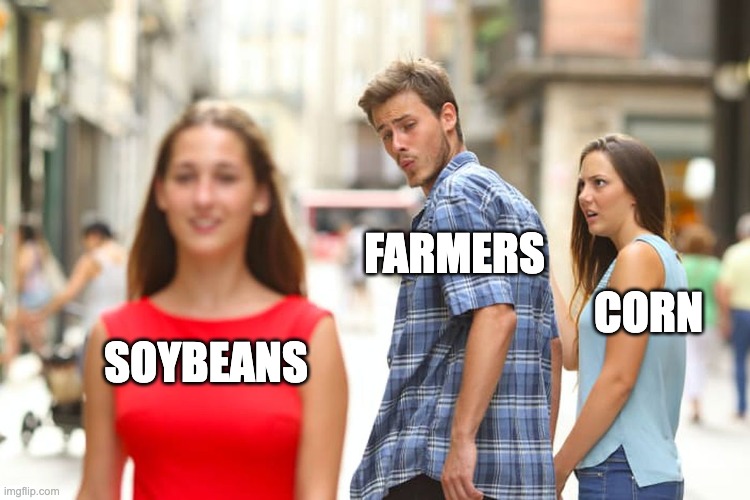Shell your corn, clean that corn head, and park it in the back of the shed. A host of analysts agree you may not need it as much next year.
S&P Global Platts is making an early and conservative prediction that three million suspected U.S. corn acres will move to the soy column during the 2022 planting season: a drop from 93M to 90M acres.
So, what’s the driving force behind the switch to soy? Fertilizer prices.
Up, up, and away: Tight supplies and skyrocketing natural gas prices (a crucial component in the production of nitrogen-based fertilizers) have sent the price of fertilizers to never-before-seen levels—and the trend is expected to stick around.
Soy surge: The nitrogen-fixing oil crop needs a lot fewer inputs, and with fertilizer typically accounting for nearly 40% of a corn farmer’s operating costs, less looks a lot better.
A matter of dollars and cents: A recent crop budget report out of the University of Illinois also points toward soybeans. The report predicts that an average central Illinois farmer can expect next year to profit $150/acre for soybeans and only $24/acre for corn.
Marketing wisely: With current November 2022 soybean contracts trading in the $12-$13/bu range, some analysts are suggesting that farmers consult with advisors and set those contracts now, as a surge in supply next year could tank the market.
Soundbite: Pete Meyer with S&P Global Platts put it this way: “If this continues with the way fertilizer prices are going, we think 2022 could be the first year U.S. farmers plant more soybeans than they do corn.”

